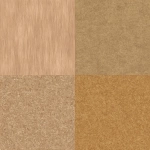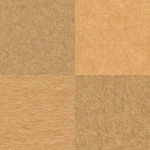Explore the Best AI Image Gallery

Beyond the Brush: Wearable Tech and the Evolving Canvas of Creativity
The landscape of creativity is in constant flux, shaped by the convergence of technology and human imagination. At the forefront of this evolution stands wearable technology, a transformative force poised to redefine how we create, experience, and interact with art.
A Symphony of Senses: Wearables Empowering Artistic Expression
From haptic feedback gloves that translate touch into sound to smart glasses that overlay augmented realities onto the physical world, wearable tech is providing artists with an unprecedented range of tools. Imagine a painter who can feel the texture of their brushstrokes translated into vibrations, or a sculptor who can manipulate digital models using intuitive hand gestures. These are just glimpses into the boundless possibilities unlocked by wearable tech in the creative realm.
Bridging the Gap: Wearables and Collaborative Creation
Wearable tech is not only empowering individual artists but also fostering collaborative creation like never before. Imagine a team of musicians each wearing sensors that react to their movements, transforming physical actions into a dynamic, synchronized soundscape. Or consider architects using haptic suits to collaboratively design and experience a building in virtual reality.
Wearables: A New Frontier for Interactive Design
The line between art and technology is blurring as wearables usher in an era of interactive design. Imagine walking through a museum exhibit where your movements trigger animations, soundscapes, or personalized narratives. This immersive, responsive experience transcends passive observation, inviting viewers to actively participate in the creative process.
Navigating the Ethical Landscape: Responsible Innovation
As with any powerful technology, wearable tech raises important ethical considerations. Data privacy, algorithmic bias, and the potential for manipulation are just a few of the issues that require careful consideration. It is essential to ensure that wearable tech empowers creativity responsibly, promoting inclusivity, transparency, and ethical practices throughout its development and deployment.
Future Horizons: The Unfolding Potential
The future of wearable technology in the creative industry is brimming with possibilities. As sensors become more sophisticated and AI algorithms evolve, we can expect even more intuitive and immersive experiences. Imagine artists using brain-computer interfaces to directly translate their thoughts into artistic expressions, or virtual reality worlds that allow users to collaborate on creative projects regardless of physical location.
Wearable tech is not just a tool; it is a catalyst for change, pushing the boundaries of creativity and reshaping our understanding of art. As we continue to explore this uncharted territory, it is essential to embrace both the transformative potential and the ethical responsibilities that come with this powerful technology.
](https://images.ai-img.art/thumbnails/150/fe5f276fbae6e7b82b778a5d75c6c3a3d7847685a096016363fb3dac5e86ad7b.webp)


















](https://images.ai-img.art/thumbnails/150/8bc294f7e0e929781b81e5eba56b4d24047876689e7c37c62905098f29fe09f0.webp)
](https://images.ai-img.art/thumbnails/150/183a1174842b42cbb63e9aeb886f204dd93e71a48c5dbb6ee2e2dff9a2ec2c45.webp)


](https://images.ai-img.art/thumbnails/150/b36011fcfb95e1fde76d03bec851ab4e367a72d661ff11b0ed3b93824a331e70.webp)







](https://images.ai-img.art/thumbnails/150/36f6cc273d716f06595e7231469968cfc6fce414ed81d352d453230ff9ae6d71.webp)





](https://images.ai-img.art/thumbnails/150/1dfe8ec430cf22b41b775e89a8a7c8de0175ed1a35e9445963a49f1aebd6ff87.webp)


](https://images.ai-img.art/thumbnails/150/18ddf9fe611d7d477e76e903501708387d216ac758145e067f8aaa3287eb3185.webp)




](https://images.ai-img.art/thumbnails/150/2eab47d9b029bd5d72abe1ffd7bd347f9237c25f956ac158993b285d3571d828.webp)


](https://images.ai-img.art/thumbnails/150/7a1a2b097f40582d803abb2d97acd59d119e3c0dc55b6fcc1f5a0ae14a606a35.webp)
